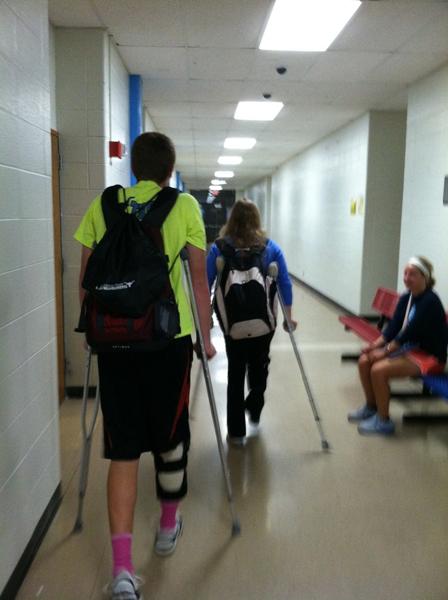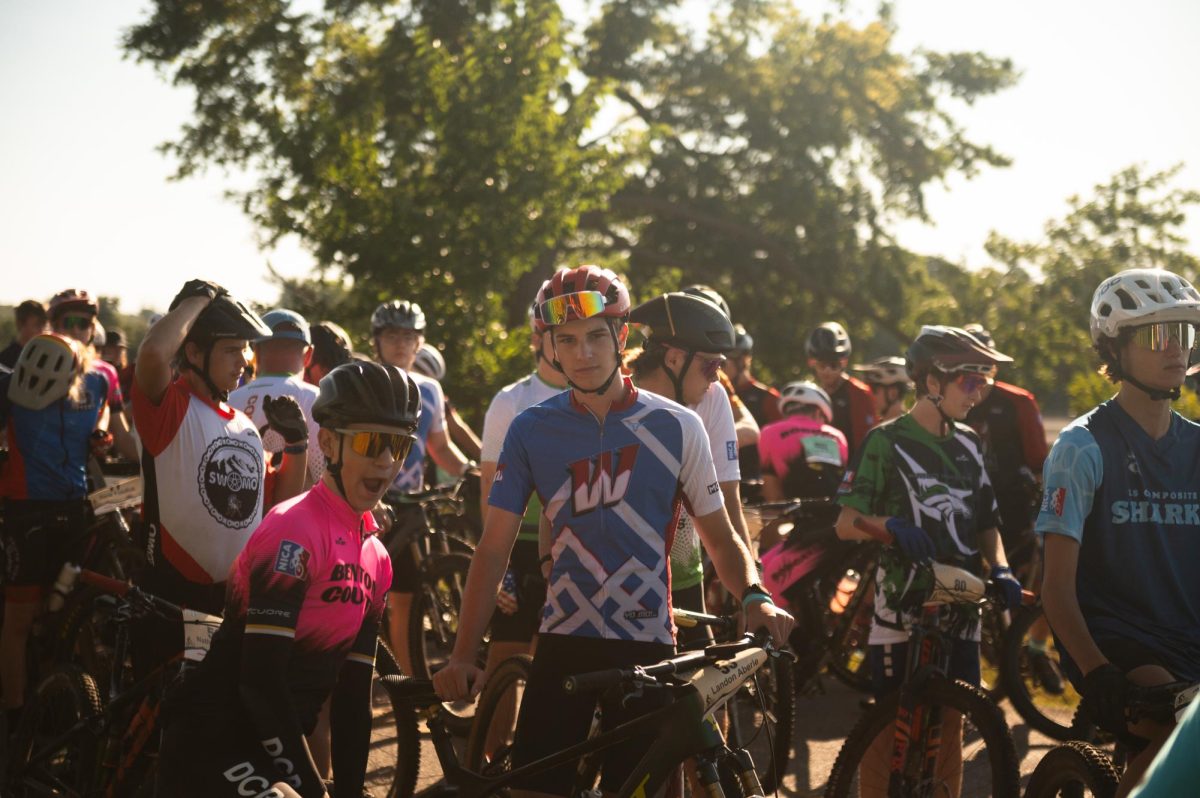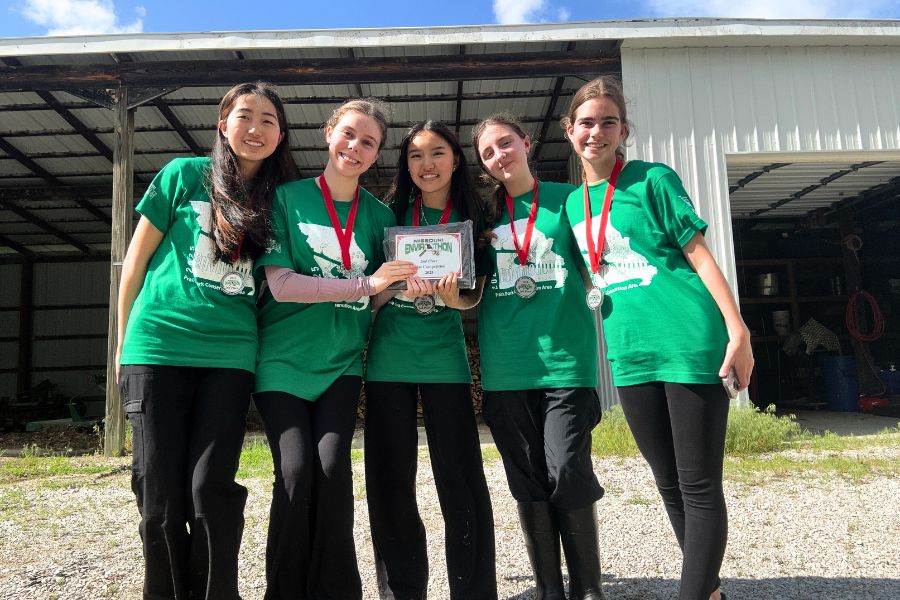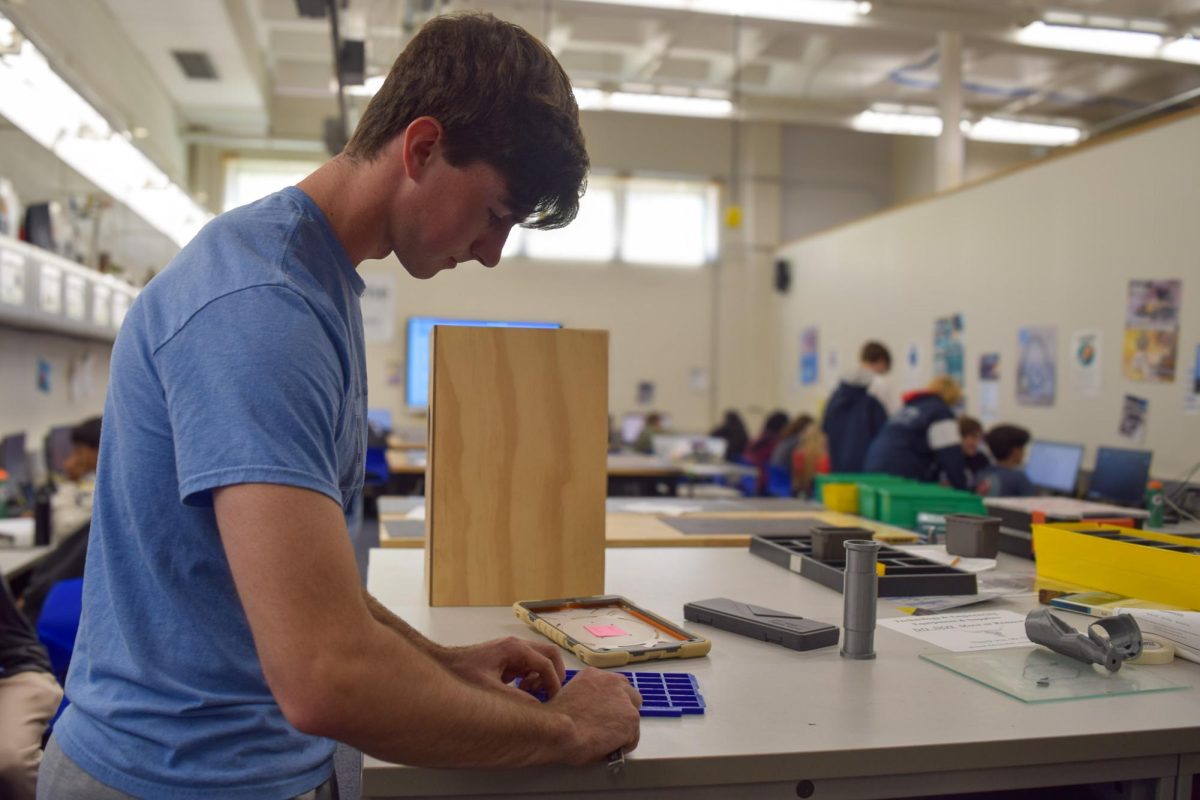
Lately, as you walk through the hallways, you may notice the growing number of crutches and casts student athletes are sporting. What is not visible is the mental toll injuries have taken upon high school athletes: the sorrow of not being able to play the sport they love, the guilt for letting down their team, the fear of never reaching their goals.
An athlete rarely ever has control over what happens in a game or practice; they cannot control their knee from popping when they slip and they cannot maneuver around a head-on collision while going for a loose ball. Those spur of the moment injuries are inevitable, but the severity of the injury can be changed.
“Approximately 50% of injuries in adolescents are preventable,” Director of MUSC Sports Medicine and orthopedic surgeon Dr. David Geier said.
If athletes want to play at a high level and have success, they must prevent. Prevention is often sport and athlete specific. In female athletes, trainers and coaches work to strengthen the hamstrings in order to avoid tearing an ACL. Male athletes work on flexibility as to avoid pulling or tearing a muscle.
According to Joe Geik, Professor of Sports Medicine and Athletic training at the University of Virginia, “[An athlete] should have a strength level appropriate for [their] sport of choice. If the muscles and tendons cannot handle the stress loads of the sport or activity, injury is sure to occur.”
In order to perform at high levels of intensity, the body must be conditioned and strengthened. Without this, injuries will occur.
“Because I broke my leg, I was babying it during the game. I landed wrong on my left leg and tore my ACL,” junior Abby Lathrop said.
Contrary to some belief, athletes should not only make sure their body is conditioned, but also, well-rested.
“Exercise is a controlled physical stress to the body. Too much stress to the body can be harmful. The stress induced by exercising can damage the body’s tissues, so rest and recovery is of utmost importance,” physical therapist Brett Sears said.
While it is difficult to gain progress as a team by cancelling a practice here and there, it is something necessary if a coach wants to keep their athletes’ bodies healthy.
“At one point, five out of 21 of our varsity players had no injuries. We’ve been forced to give days off when maybe we didn’t want to or doing alternative things where kids cannot do certain drills in order to make sure our players are healthy,” Assistant Boys’ Soccer Coach Annie Wayland said.
An athlete’s health must come first. However, this detail is overlooked far too often. One of the main causes of injuries in high school athletes today is specialization. Athletes are specializing too much in one sport, one position that their bodies are overused.
According to Dr. Geier, “over 50% of injuries in young athletes are due to overuse.”
In order to reach their maximum level of competition and skill, young athletes specialize in their one sport and their one position. Unfortunately, to be the best and to reach the highest level athletes are expected to train constantly, sometimes resulting in overuse.
“I personally believe kids do not grow up using their natural muscles. Kids are specialized now. If you’re a hitter, you hit. When I was younger, we rode bikes and played multiple sports. We took it upon ourselves to be active from a holistic perspective instead of specialized,” Assistant Athletic Director and Varsity Volleyball Head Coach Susan Dean said.
The injuries athletes sustain may require surgery and months of recovery. Surgery and recovery brings an overwhelming amount of pain to the athletes. In addition to physical effects, the injuries affect athletes’ mentality and schoolwork.
“I’m going to go insane without playing. It’s hard on me. This is coming right off a season I missed for tearing my hip flexer. I’m trying to remain positive, but it’s hard. When they told me, I started crying. I was in complete denial,” junior Maddy Quoss said.
Injuries overwhelm student athletes, bringing them more worry about. For many, their sport is a stress relief. When the athlete is injured, they cannot play. When they cannot compete, college coaches cannot see them. As a result, athletes believe that they may never reach their goal of playing their sport in college. Without playing it, they become more stressed. With an injury, it only brings even more pressure.
“Tearing my ACL was the last thing I was hoping for. It was just a huge hit. I got all sweaty and felt lightheaded. I’m still working on make up work. It’s been tough, but it has taught me not to take little things like running and teams for granted,” junior Johnny Galvin said.
The strain of an injury is always hard to cope with. However, it does give athletes a greater appreciation for the sport they play and the teams they are on. The sport is no longer a right but a privilege.
According to Dr. Geier, high school athletes are becoming injured more often. They are overspecializing in their sport and pushing their body to compete at higher levels. Without taking proper, safe steps to strengthen and condition, high school athletes will be unable to prevent minor to severe injuries.

![Focused on providing exceptional service, sophomore Darsh Mahapatra carefully cleans the door of a customer’s car. Mahapatra has always believed his customers deserve nothing less than the best. “[If] they’re trusting us with their car and our service, then I am convinced that they deserve our 100 percent effort and beyond,” Mahapatra said.](https://pwestpathfinder.com/wp-content/uploads/2025/10/DSC_0018-1200x800.jpg)
![Sophomore Aleix Pi de Cabanyes Navarro (left) finishes up a soccer game while junior Ava Muench (right) warms up for cross country practice. The two came to Parkway West High School as exchange students for the 2025-2026 school year. “The goal for the [exchange] program is to provide opportunities for both Parkway students and our international exchange students to learn about other cultures, build connections and become confident, capable, curious and caring — Parkway’s Four C’s — in the process,” Exchange Program Lead Lauren Farrelly said.](https://pwestpathfinder.com/wp-content/uploads/2025/10/Feature-Photo-1200x800.png)

![Gazing across the stage, sophomore Alexis Monteleone performs in the school theater. The Monteleone family’s band “Monte and the Machine” has been releasing music since 2012, but Alexis started her own solo career in 2024 with the release of her first single, Crying Skies. “My whole family is very musical, [and I especially] love writing [songs with them],” Monteleone said.](https://pwestpathfinder.com/wp-content/uploads/2025/09/DSC7463-1200x798.jpg)
![Amid teaching a lesson to her AP Calculus BC class, Kristin Judd jokes alongside her students in their funny remarks. Judd has always enjoyed keeping the mood light in her classroom, along with on the volleyball court. “[I enjoy] that side talk where you see [or] overhear a conversation and chime in, or somebody says something funny,” Judd said.](https://pwestpathfinder.com/wp-content/uploads/2025/09/image-1200x730.jpg)
![Eyeing the ball, junior Ella McNeal poses for her commitment pictures at Clemson University. McNeal’s commitment comes after months of contact with top Division 1 soccer programs. “ It has taken a lot to get to where I am, but I know that [what] I've already been through is just the beginning, and I can't wait for what is to come,” McNeal said.](https://pwestpathfinder.com/wp-content/uploads/2025/09/IMG_4926-1200x900.jpeg)


![Senior Adam Zerega stands with senior Dexter Brooks by farm equipment. Zerega often worked with friends and family on his farm. “I've been able to go to my family's farm since I was born. I [spend] at least three weekends a month [on the farm], so I'm there all the time,” Zerega said.](https://pwestpathfinder.com/wp-content/uploads/2025/04/IMG_4872-1200x900.jpg)
